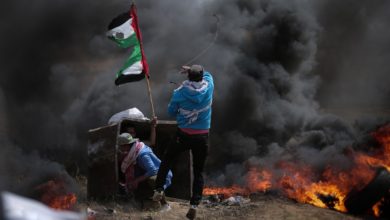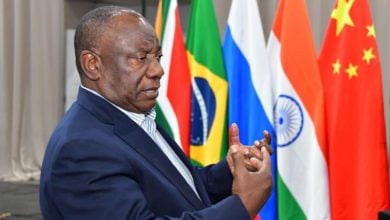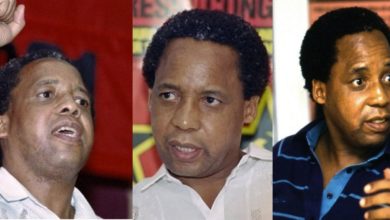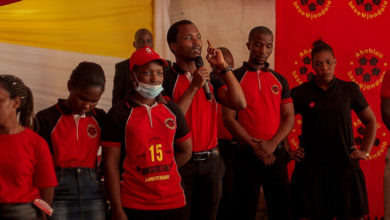 Photo: Pan African Lit Agency |
Apartheid was a particular form of racist rule in South Africa, in force for most of the 20th century. A legacy of British colonial rule, it was institutionalized by the Afrikaaner white settlers in 1948. It enforced harsh economic exploitation of the Black majority by racist segregation and socio-economic controls.
In the mid-1970s, Black students began to challenge the apartheid educational system, designed to integrate them into a racist and unequal economy. Denied access to jobs set aside for the white minority, Black students received inferior educations. In 1975, the government spent about 15 times more on the education of a white child than on the education of a Black child. As explained by Hendrik Verwoerd, an architect of the apartheid system, “Natives must be taught at an early age that equality with the Europeans is not for them.”
The straw that broke the camel’s back was the government’s attempt to impose the oppressor’s language, Afrikaans, as the language of classroom instruction. Enacted in 1953, the law infuriated Black students and teachers, who immediately began organizing against it. They set up alternative schools and called it the African Education Movement.
In February 1976, Black students in the Soweto Township, near Johannesburg, began staging protests and boycotting classes when two teachers were dismissed for refusing to teach in Afrikaans. Against the backdrop of growing popular resistance to the use of Afrikaans in the classroom, 300 to 400 members of the South African Student Movement met on June 13 to form the Soweto Students’ Representative Council. The SSRC, an action committee with representatives from each Soweto school, organized the student demonstration that took place three days later.
The massacre
The students began gathering for the demonstration in the early morning of June 16. Students from Naledi High School and Morris Isaacson High School planned to march from their respective schools, picking up other students along the way, and then converge at a central point before heading to Orlando Stadium.
The march had been carefully organized as a non-violent protest. SSRC chairperson Tepello Motopanyane had instructed the students at Naledi High to march peacefully and with discipline. When the students heard reports of approaching police forces, SSRC leader Tietsi Mashinini climbed atop a nearby vehicle and reminded them to remain cool.
The state forces, however, did not tolerate any form of opposition to the racist regime. As the march swelled, the police blockaded the route close to Orlando High School. Despite the tense situation, the protesters, by that time numbering a solid 10,000 to 15,000, continued to chant and hold their placards high.
Unable to intimidate the students, the police resorted to savage repression. Dogs were released and teargas was lobbed at the crowd. Then came live rounds. As the first students fell, chaos ensued.
Thirteen year-old Hector Petersen was one of the first victims. The photograph of young Hector being carried away, blood dripping from his mouth, became a symbol of the massacre. He was declared dead on arrival at a local clinic.
Resistance spreads
The students’ initial outrage at the senseless violence soon developed into massive resistance. With little more than stones and bottles, Black youth stood on the front lines and defended themselves against the heavily armed police. Turning against the symbols of apartheid, they set fire to administrative buildings, government-owned liquor stores and officials’ cars. Within hours the South African government sent in the army, shooting indiscriminately at Soweto’s Black youth.
But the people’s fury could not be contained to Soweto. Two days later, the flames of resistance had spread to Pretoria, Durban and towns in the Transvaal and the Orange Free State. Within four months, 160 communities nationwide had joined in the revolt, using tactics ranging from peaceful protest to sabotage. The state responded with increased violence.
Uprisings continued throughout 1976 and 1977. The rage unleashed by the massacre became an important factor in widening the mass anti-apartheid struggle.
The government-appointed Cillie Commission concluded that 575 people died and 2,389 were injured during the uprisings between June 16, 1976, and Feb. 28, 1977. Both figures have been disputed by various authorities as being gross underestimates. Some sources indicate as many as 600 students were killed on June 16 alone. Instead of killing the movement, the government’s repression radicalized the oppressed and only fueled their resistance.
The use of the Afrikaans language in the classroom was the spark, but the movement developed a much broader political character and turned against all aspects of the apartheid regime. On the first anniversary of the Soweto massacre, the African National Congress called a strike against segregation, job reservation, police brutality and the Bantu education system.
A turning point
June 16, 1976 was not the first massacre at the hands of the apartheid regime. The events of that day evoked memories of the 1960 Sharpeville massacre, in which 70 peaceful protestors were shot down.
But the Soweto massacre marked a turning point in the anti-apartheid struggle. The heroism and leadership of the middle and high school students galvanized millions of Black South Africans and their supporters to take bolder actions. South Africa’s youth became the vanguard leadership in the struggle against apartheid. It brought the world’s attention and solidarity to the oppressed Black people of the country.
Hector Peterson and the other martyrs of June 16, 1976 live today in the struggles of South Africans to take the next steps in erasing the legacy of white apartheid rule for the country’s millions of Black workers.
Articles may be reprinted with credit to Socialism and Liberation magazine.






